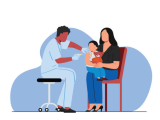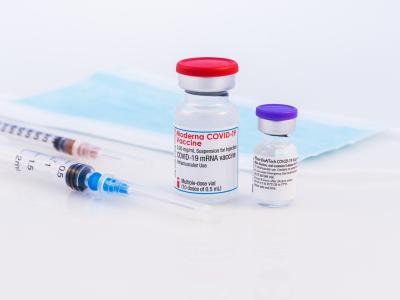Apr 3, 2007 (CIDRAP News) – Social control measures such as closing schools and banning public gatherings played a significant role in slowing the advance of the 1918 influenza pandemic in a number of US cities, but their success depended on how soon the measures were deployed and how slowly they were lifted, two teams of researchers reported yesterday.
Their reports in the Proceedings of the National Academy of Sciences (PNAS) are the first to give statistical support to the past usefulness of nonpharmaceutical interventions (NPIs), the term for an array of social-distancing measures such as school closures and business "snow days" that planners believe may mitigate the impact of future flu pandemics.
"We have had very little data to suggest that NPIs could have a major effect on transmission during a pandemic; these things have not been looked at in a robust way," said Neil Ferguson, D.Phil., director of the MRC Centre for Outbreak Analysis and Modeling at Imperial College London and lead author of one of the papers. "This is the first indication that maybe they would work if you are prepared to bite the bullet and accept the inherent costs."
But both Ferguson and the authors of the second PNAS paper declined to speculate on how useful NPIs might be in a future pandemic, saying there is no evidence they can hold off infection indefinitely.
"The major benefit of delaying transmission is to buy time to develop a vaccine," said Marc Lipsitch, D.Phil., a professor of epidemiology at Harvard School of Public Health and a coauthor of the second paper. "Anything else is just delay."
NPIs, sometimes called community mitigation strategies, are considered critical to slowing the advance of a future pandemic because antiviral drugs are expected to be in short supply and a vaccine tuned to the emerging pandemic strain would take months to produce.
The Centers for Disease Control and Prevention in February released an extensive guide and set of recommendations to help states and localities employ such measures. In a sign of the topic's importance to the federal planning effort, the document was cosponsored by 14 federal agencies and an array of private groups.
But while NPIs make intuitive sense, actual evidence for their ability to block or slow flu transmission has been limited. An Institute of Medicine report released last December concluded that the measures might help in a pandemic but should not be oversold.
"It is almost impossible to say that any of the community interventions have been proven ineffective," the report said. "However, it is also almost impossible to say that the interventions, either individually or in combination, will be effective in mitigating an influenza pandemic."
The Lipsitch article, coauthored by Richard J. Hatchett, MD, of the National Institutes of Health, and Carter Mecher, MD, of the Department of Veterans Affairs, analyzes the effect of 19 types of NPIs used in 17 US cities during the fall phase of the 1918 pandemic. The authors found that certain types of NPIs, notably school, church, and theatre closings, were more effective than others, and that cities that imposed NPIs early in the epidemic had peak weekly death rates about 50% lower than those of cities that imposed NPIs later or not at all.
But, they found, cities that were able to reduce their rates of illness and death during the onset of the pandemic were at greater risk of experiencing a greater second wave of illness and death once restrictions were relaxed.
That finding is also supported by Ferguson's paper, coauthored with Martin C.J. Bootsma of Utrecht University, which applies a mathematical model to data from 16 cities where both the start date and the end date for NPIs are known. Cities that enacted NPIs early were able to reduce transmission by up to 50% compared with cities that introduced such measures later in their local epidemics. However, the total mortality declined much less than that—from 10% to 30% in the most successful cities—because the interventions blocked transmission so effectively that many residents were still vulnerable to the virus once the controls were lifted. Few cities maintained distancing measures more than 6 weeks, according to the Lipsitch study.
The studies were funded by the National Institute of General Medical Sciences (NIGMS) at the National Institutes of Health (NIH) as part of an ongoing effort called the Models of Infectious Disease Agent Study (MIDAS).
In a statement, Anthony Fauci, MD, director of NIH's National Institute of Allergy and Infectious Diseases (NIAID), said the two studies underline that "a primary lesson of the 1918 influenza pandemic is that it is critical to intervene early. . . . Nonpharmaceutical interventions may buy valuable time at the beginning of a pandemic while a targeted vaccine is being produced."
The papers' findings dovetail with work published last December by Howard Markel, MD, PhD, a professor and director of the Center for the History of Medicine at the University of Michigan. Markel and his team studied seven US towns and self-contained institutions—including a college, a naval station, a tuberculosis sanatorium, and a school for the blind—that experienced no deaths and almost no illness during the fierce second wave of the 1918 pandemic.
They concluded that the communities' success in avoiding infection came from their strictness in enforcing a suite of NPIs—including bans on entry or exit—that the authors termed "protective sequestration."
Both sets of PNAS authors acknowledge a limitation in their studies: Too little information survives to suggest whether the 1918 NPIs worked because people followed them, or because they created a climate of awareness that caused people to take other or additional protective steps as well.
That weakens the case for the measures' success, said Michael T. Osterholm, PhD, MPH, director of the University of Minnesota Center for Infectious Disease Research and Policy (which publishes CIDRAP News). "We have learned far too often that what was recommended to a population and what they did are two different things," he said. "The devil is in the details of what people really did, and unfortunately we will never have the details."
Hatchett, an associate director for emergency preparedness at NIAID, disagreed. "Whether it is the interventions themselves, or the unmeasured private behavior, what matters is the outcome," he said. "Knowing which is most responsible is less important than knowing there are policy actions that communities can take that are conducive to reducing transmission."
Hatchett RJ, Mecher CE, Lipsitch et al. Public health interventions and epidemic intensity during the 1918 influenza pandemic. Proc Natl Acad Sci 2007
Bootsma MCJ, Ferguson NM. The effect of public health measures on the 1918 influenza pandemic in U.S. cities. Proc Natl Acad Sci 2007
See also:
Feb 1 CIDRAP News story "HHS ties pandemic mitigation advice to severity"
Dec 14, 2006, CIDRAP News story "IOM says community measures may help in a pandemic"
Markel report in Emerging Infectious Diseases on institutions that used protective sequestration in 1918
http://wwwnc.cdc.gov/eid/article/12/12/06-0506_article


















